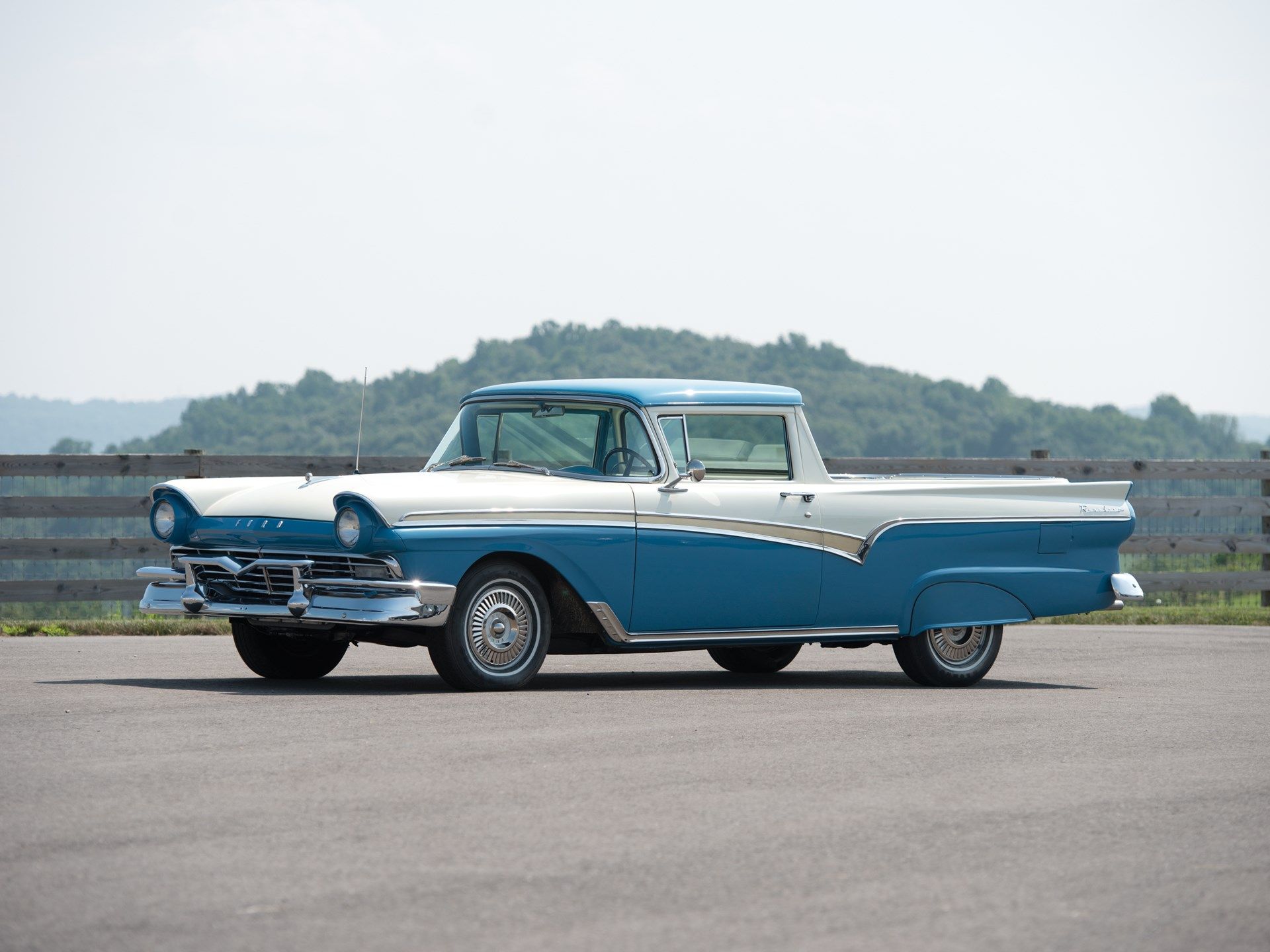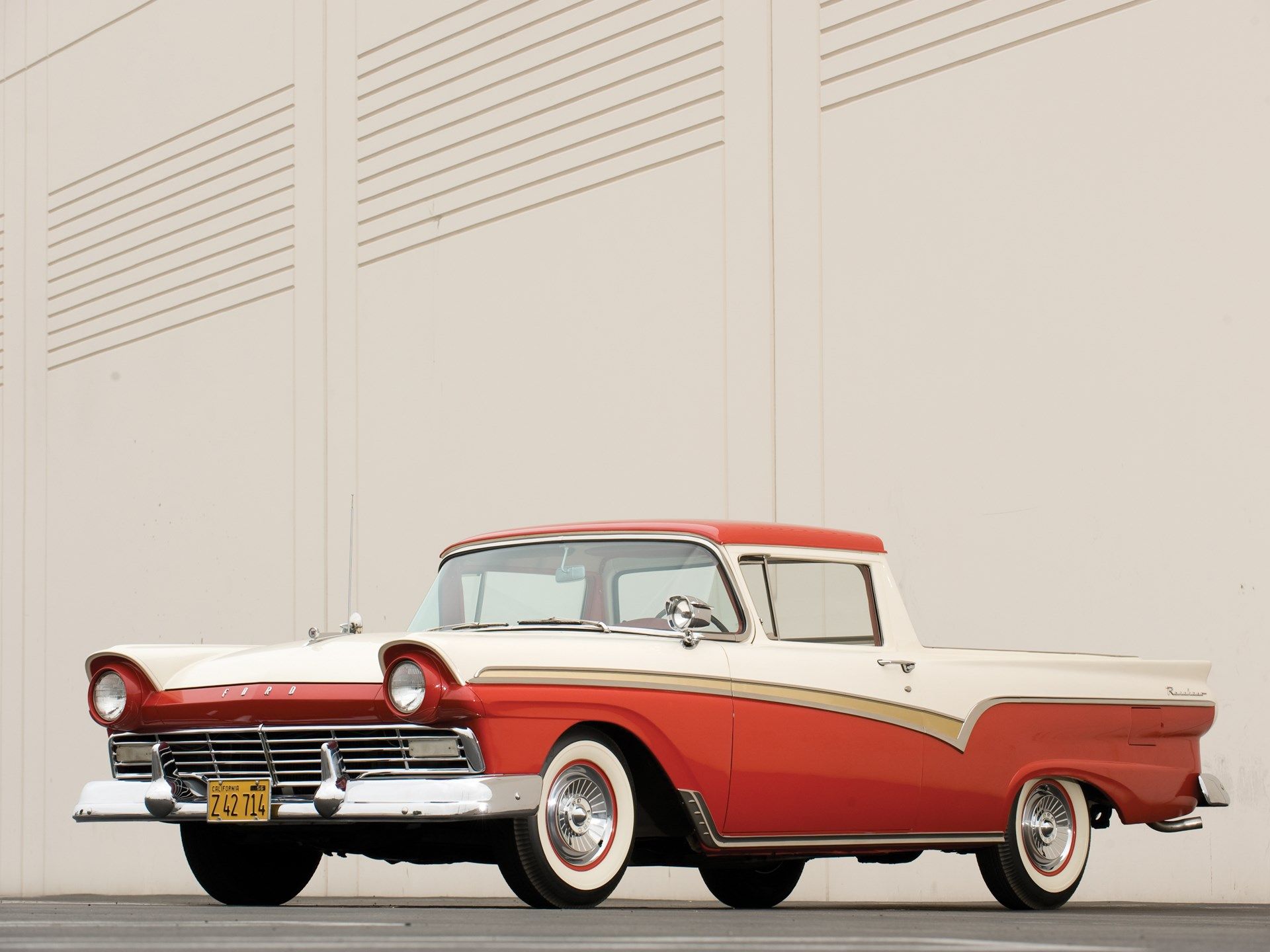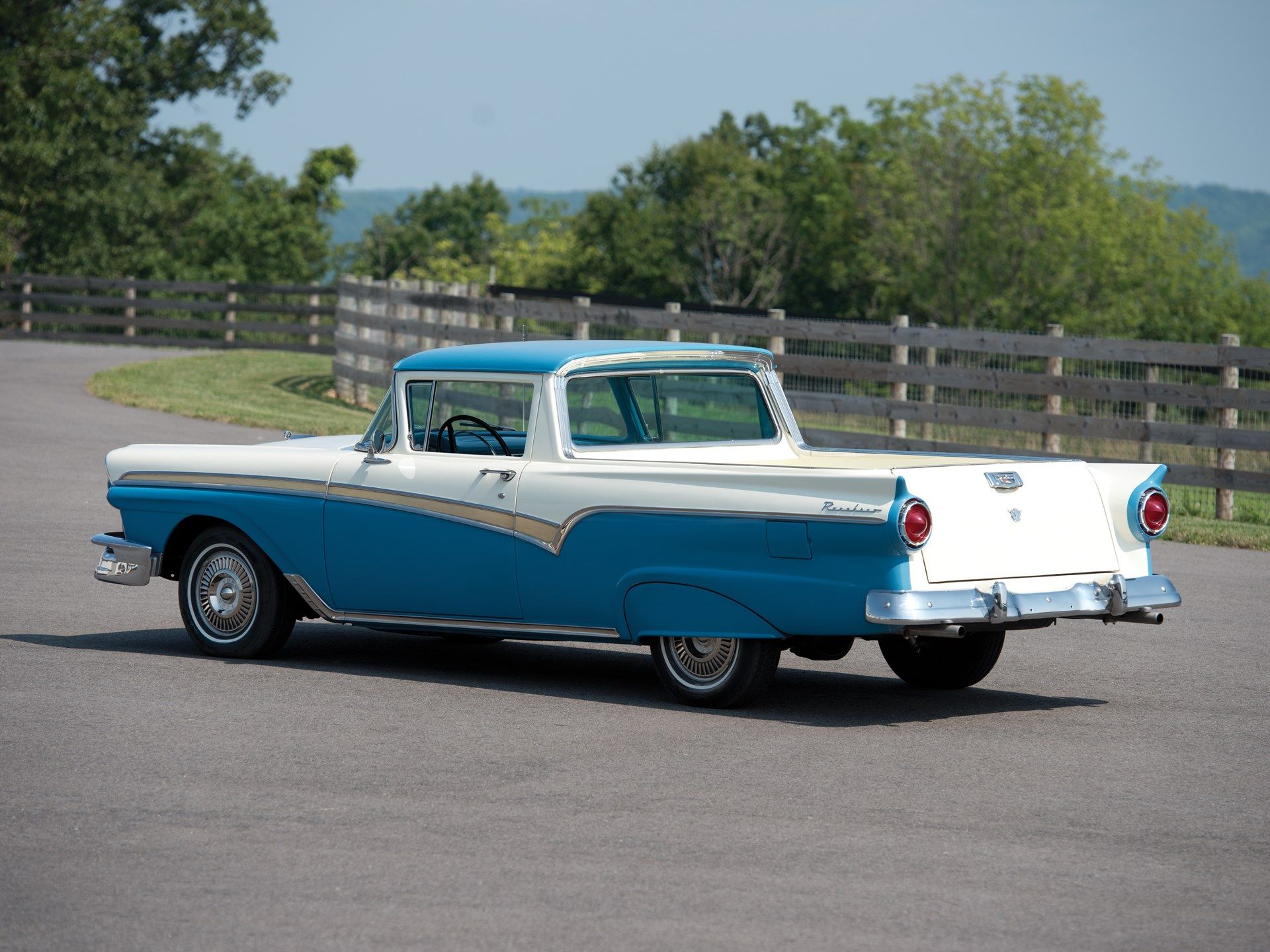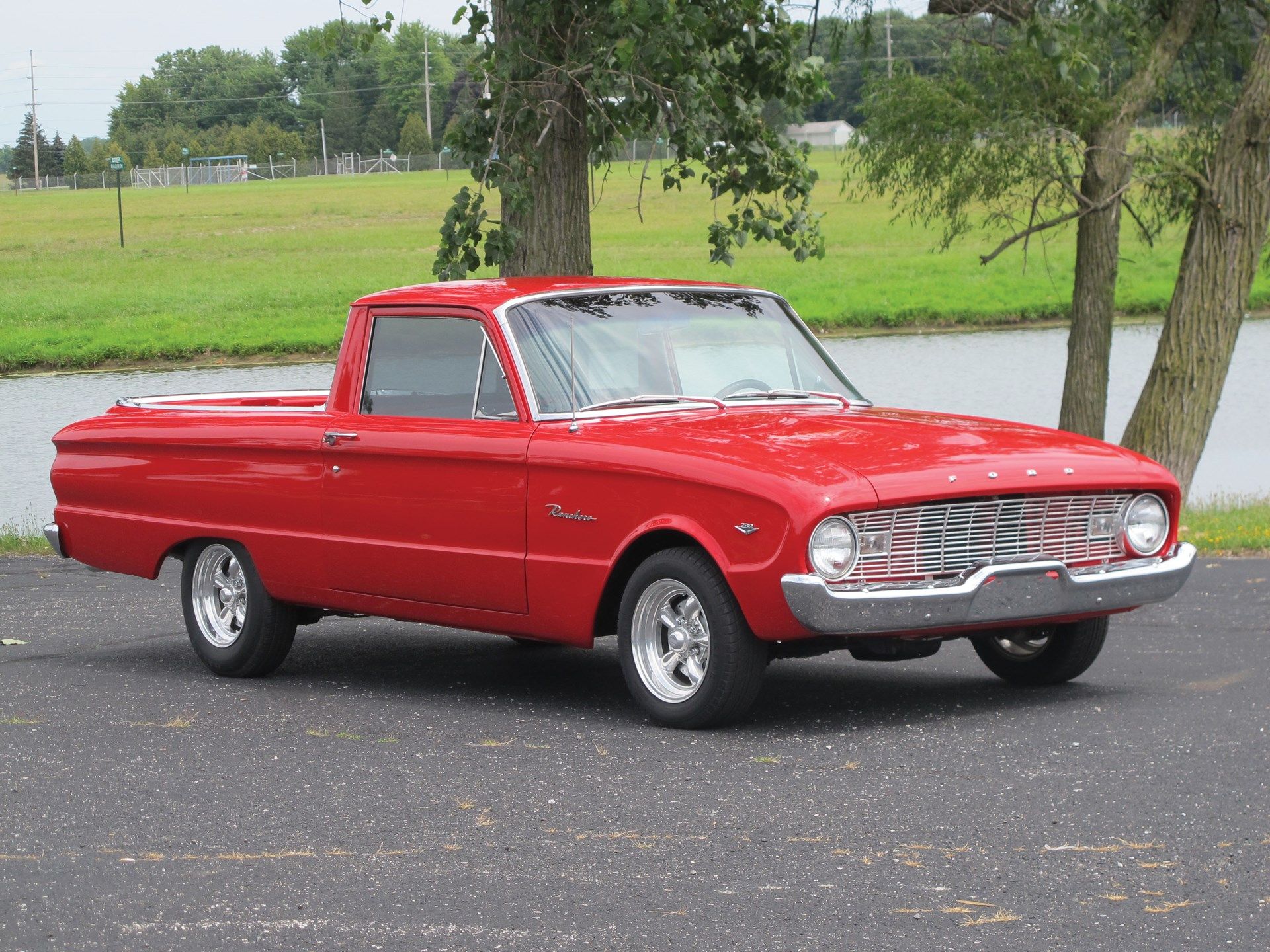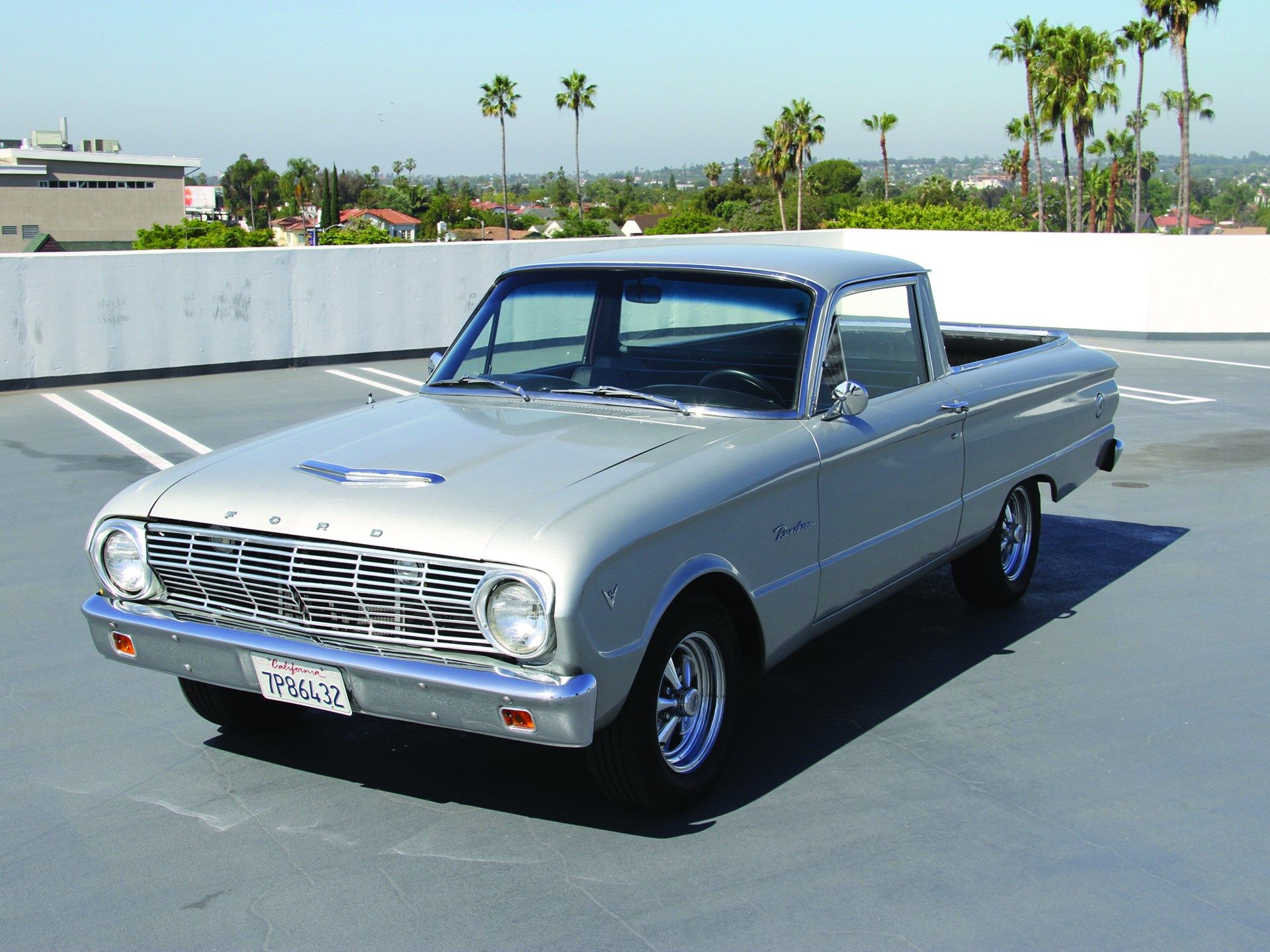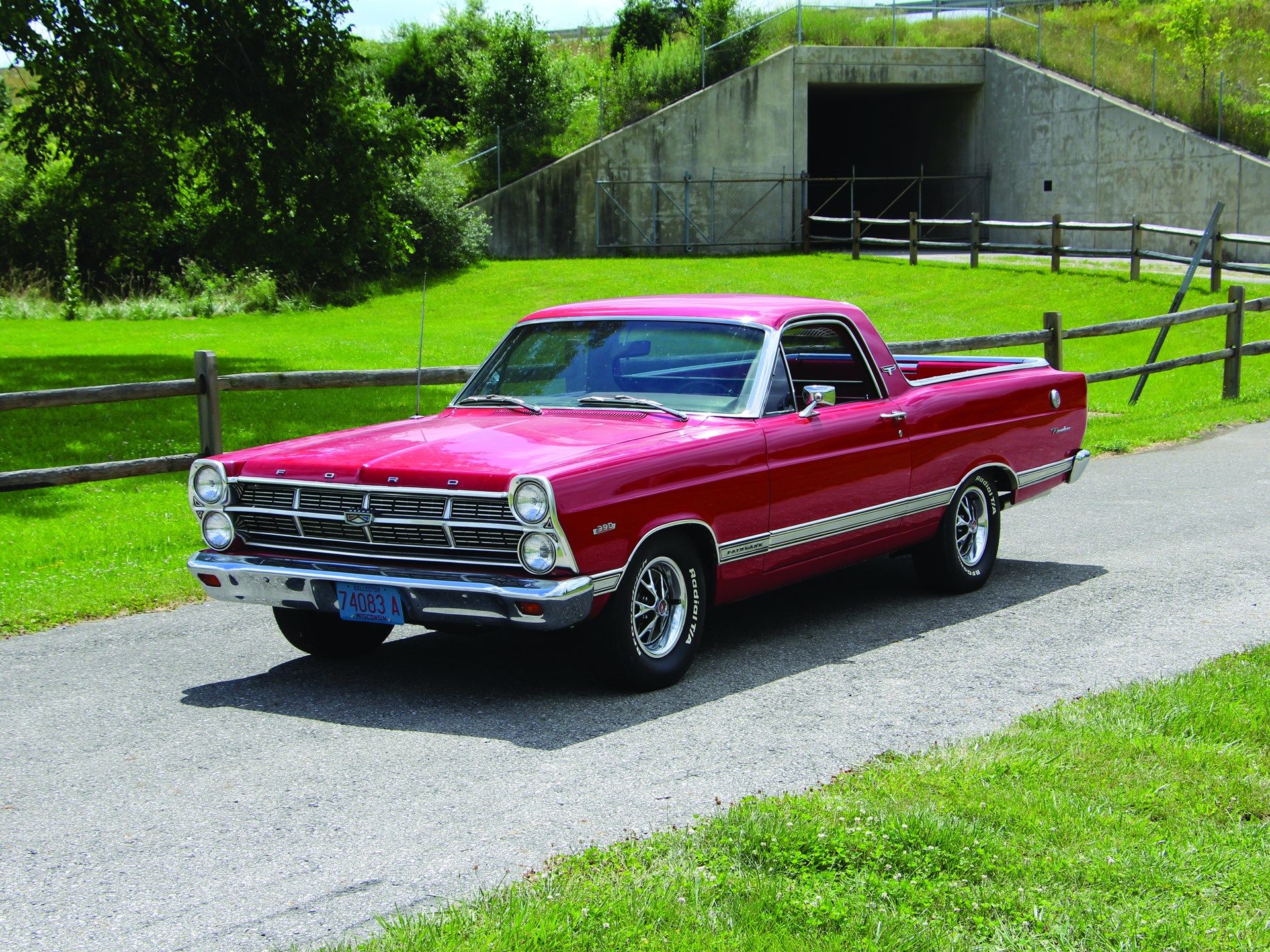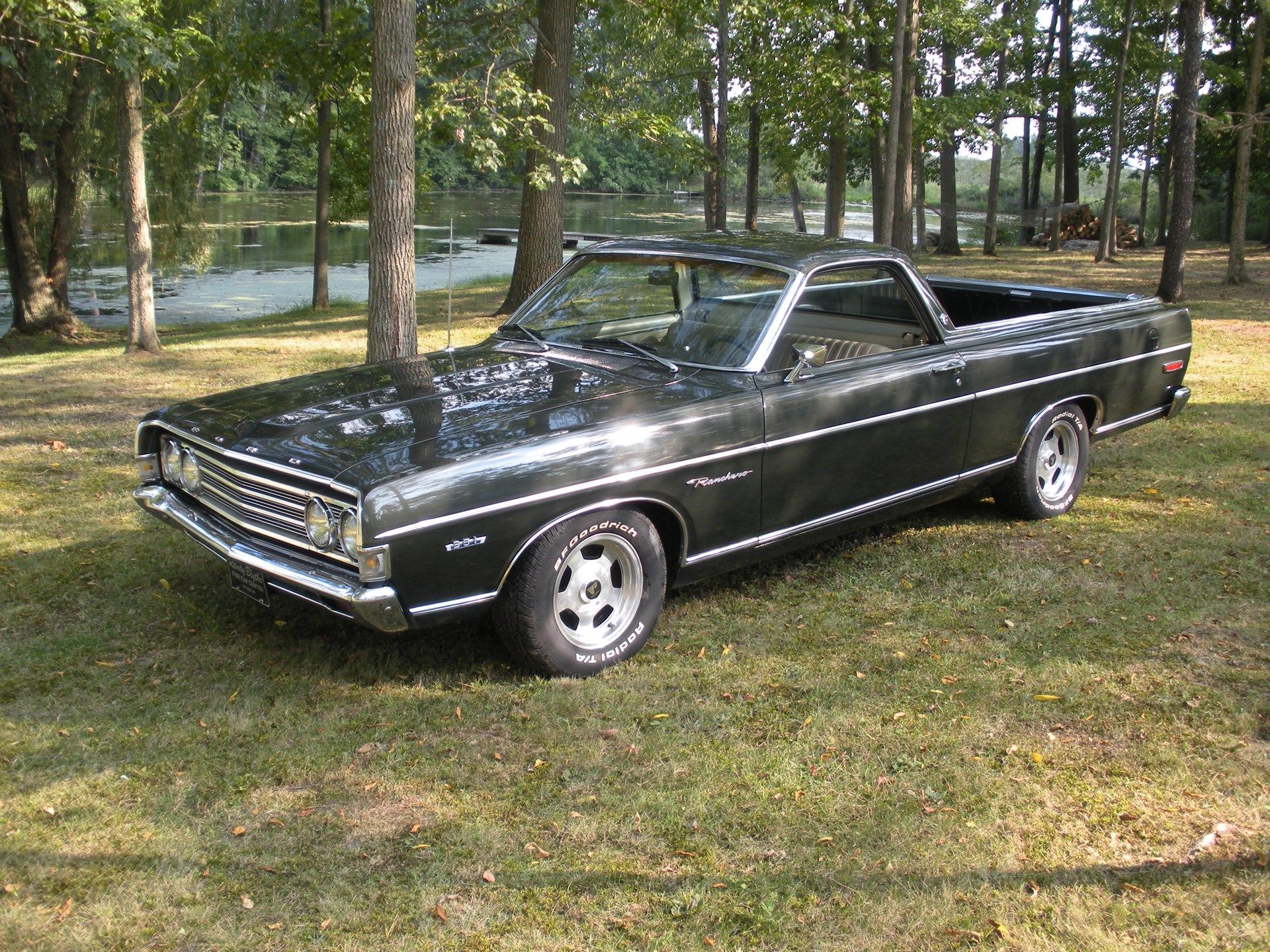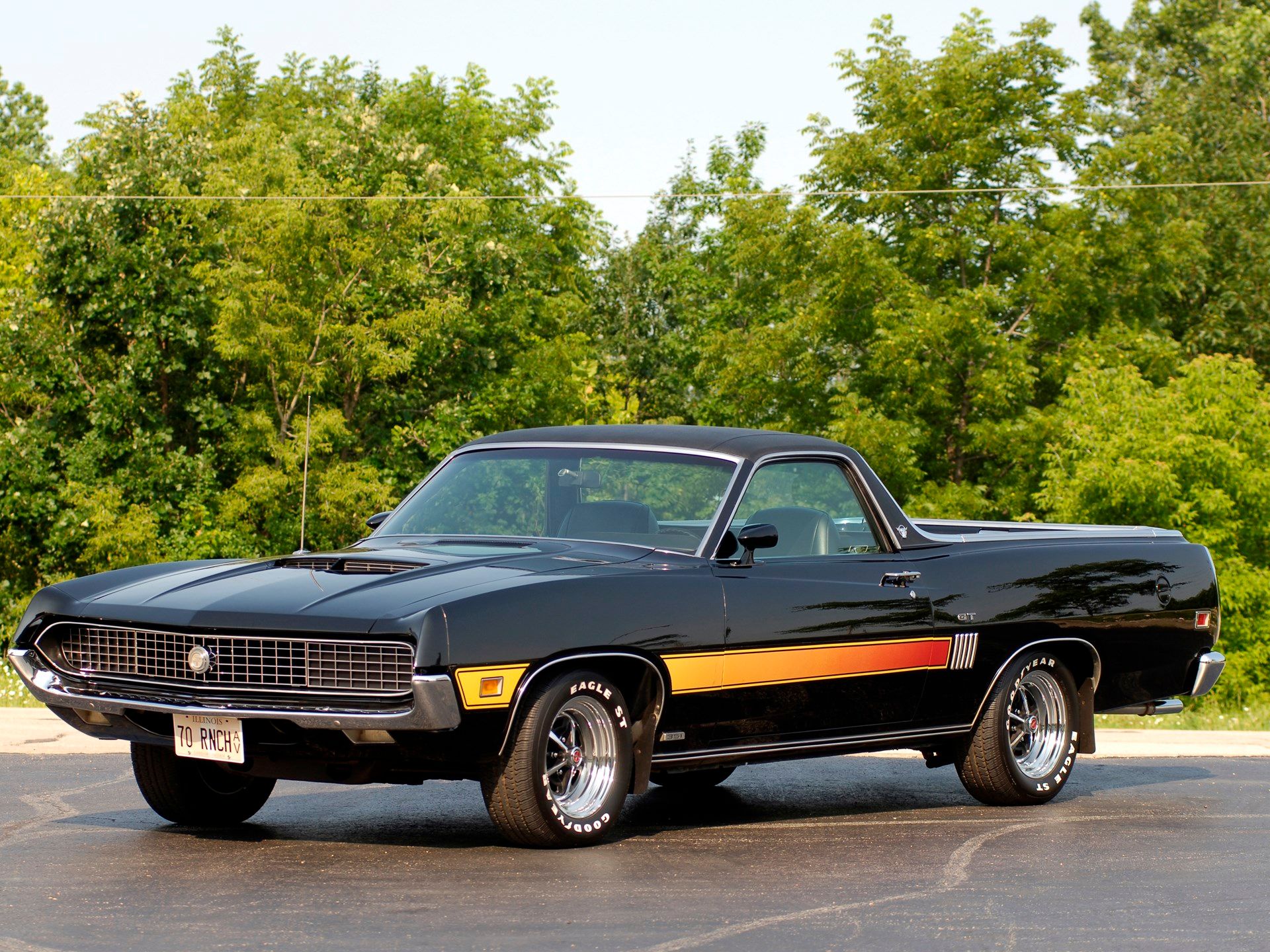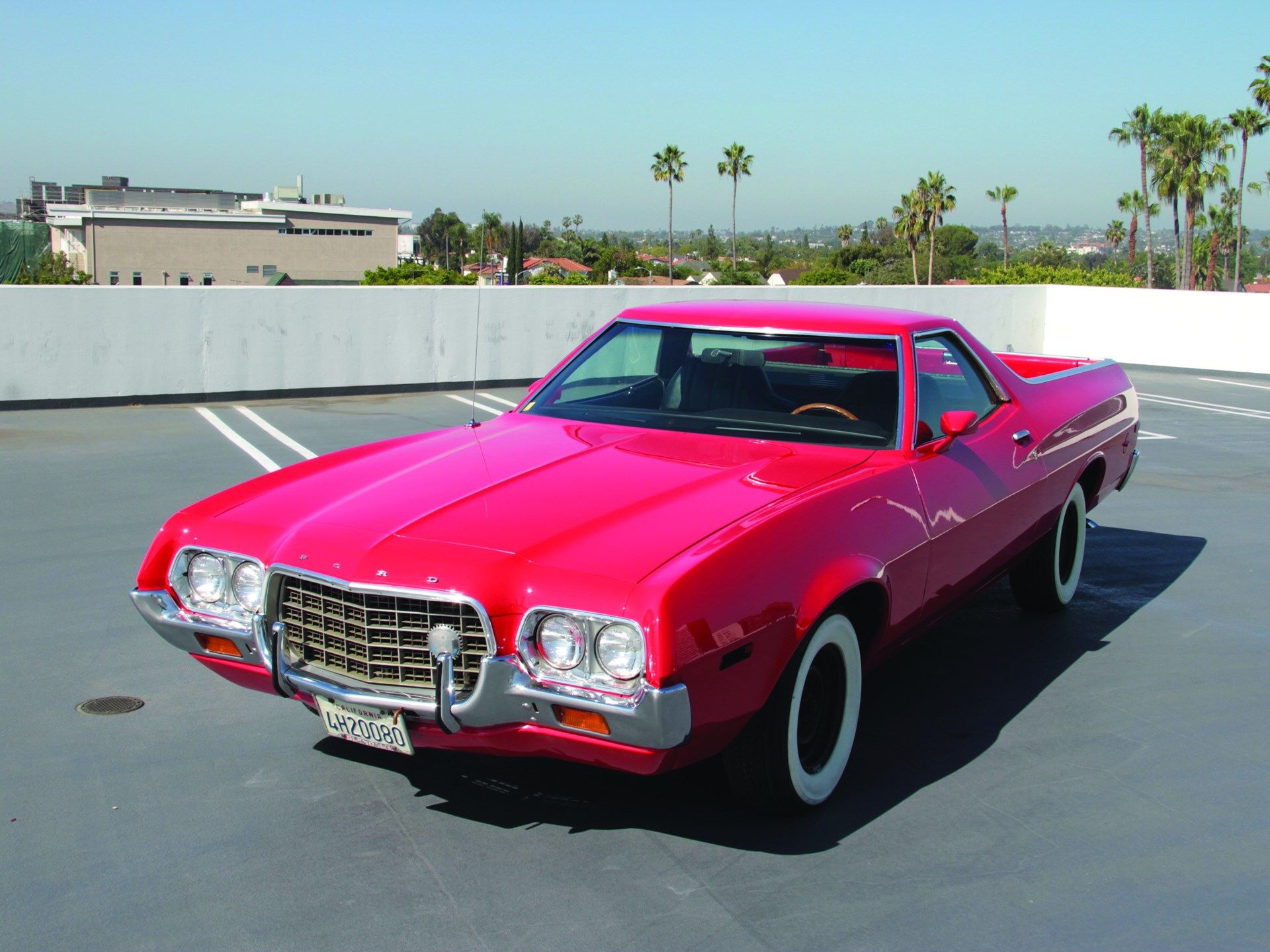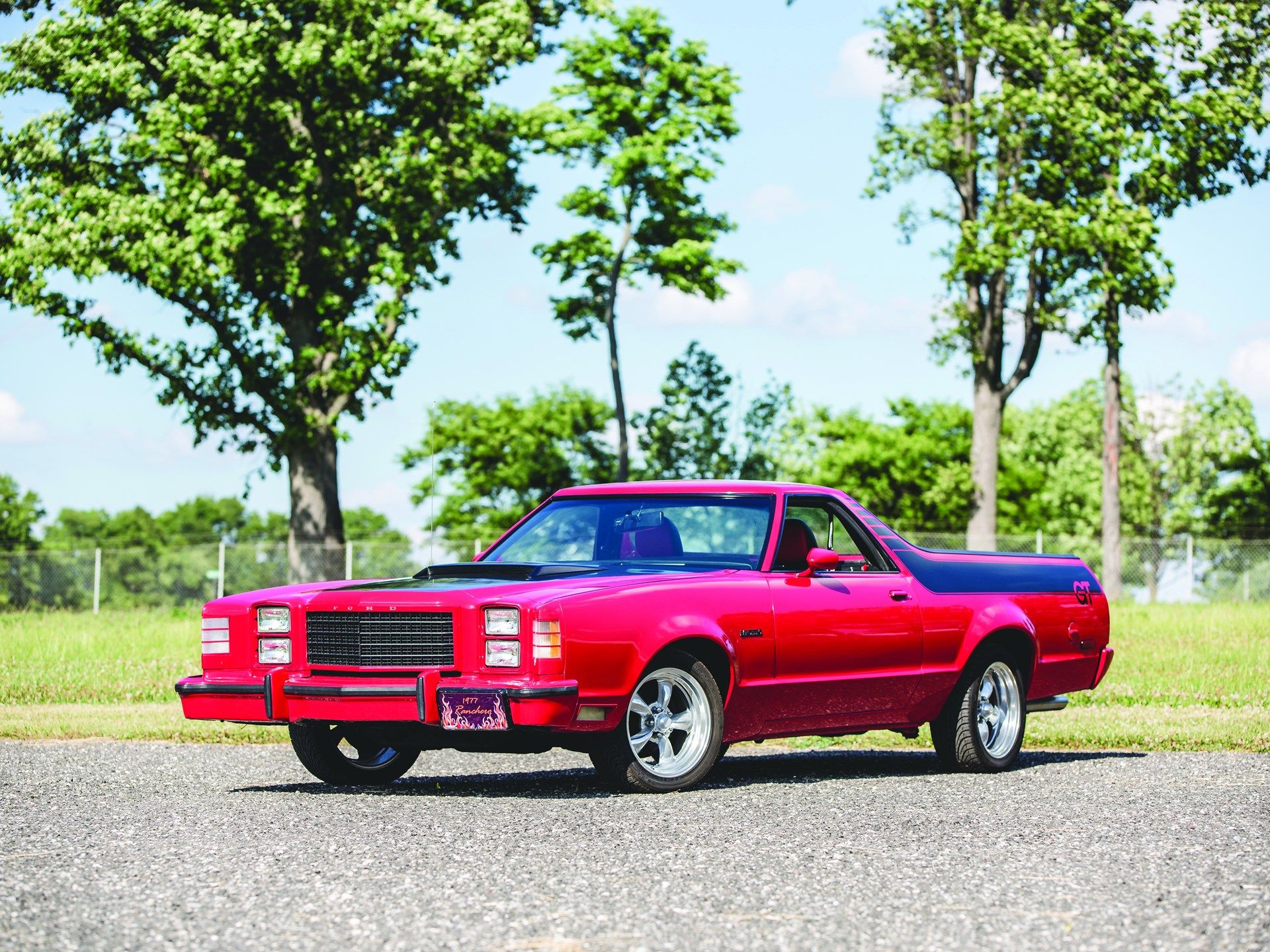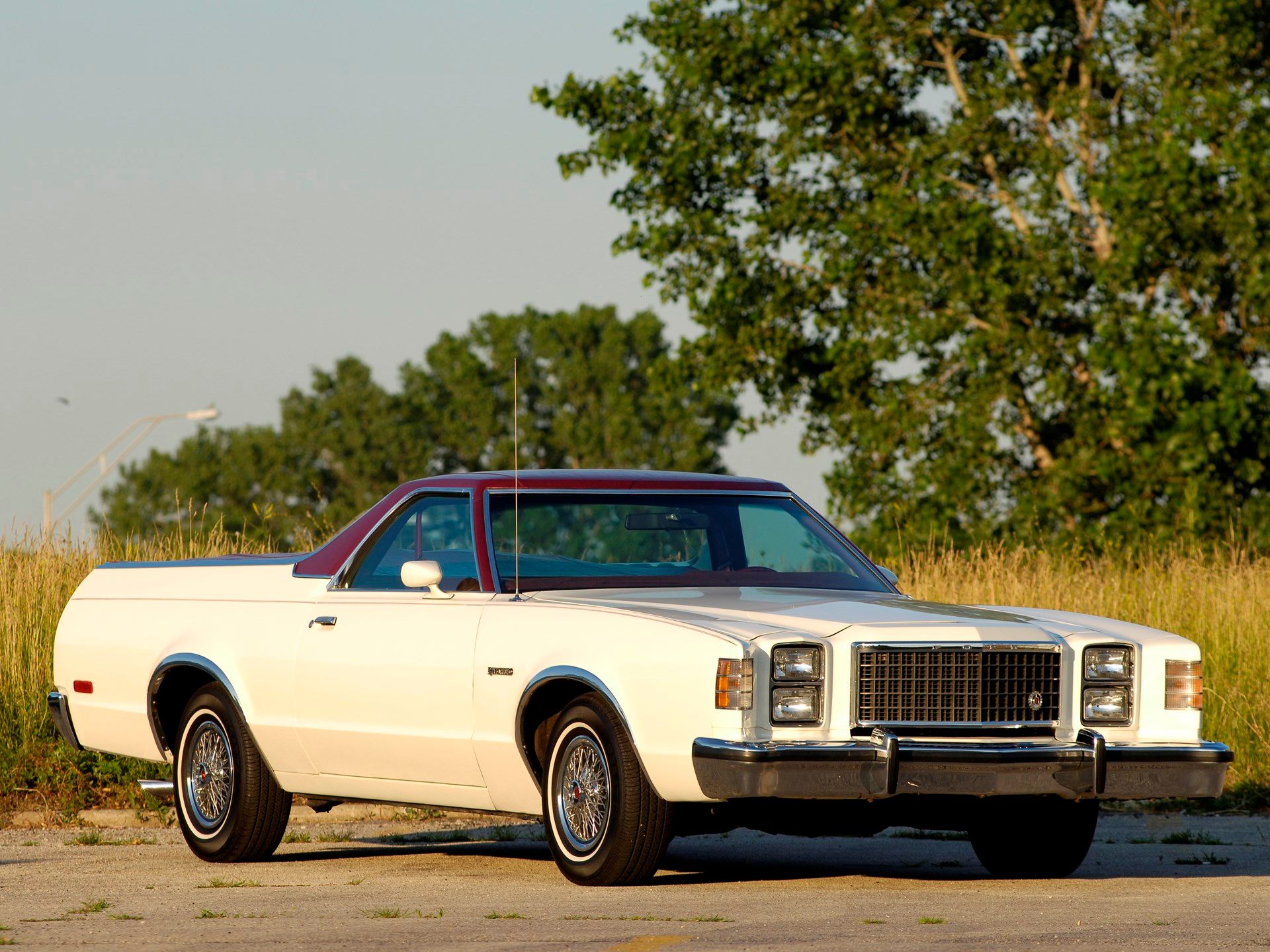Earlier this year, Ford announced that it will discontinue most of its cars in the U.S. to expand its crossover lineup. The company has already confirmed that it will revive the Bronco and that it will also offer a smaller, boxier SUV based on the Focus. Word has it that Ford is also planning to build a subcompact truck on the same underpinnings and it could be called the Ranchero.
If this happens, the iconic nameplate will return to the U.S. market after more than 40 years. There's no official info as to when this will happen, but sources "familiar with Ford's future product plan," as unveiled by Automobile Magazine in July 2018, said the truck could arrive as early as 2022, and that it could be produced in Mexico.
With the Ranchero likely to make a comeback soon, we decided to take a closer look at the iconic truck that was built between 1957 to 1979.
Continue reading for the full story.
The Background
While it's often referred to as a pickup truck, the Ranchero was actually a coupe utility vehicle, as it was adapted from a two-door station wagon that integrated the cargo bed into the body. The idea wasn't new when Ford introduced the Ranchero in 1957.
The Detroit-based company had created trucks from cars long before that, with the first examples dating back to the Model T that was offered until 1927. Ford also made cargo bed version of the Model A that was built from 1927 until 1931, too. However, American trucks quickly evolved into a heavier duty form with cabs and beds built as distinct elements by the late 1930s.
The first true utility coupe was born in Australia when Ford designer Lew Bandt added a bed to the local version of the 1934 Ford five-window coupe. The vehicle was created following a letter from the wife of a farmer in Victoria, Australia asking for "a vehicle to go to church in on a Sunday and which can carry our pigs to market on Mondays". This created the Ute body style that's still popular in Australia thanks to the numerous models made by Ford and Holden throughout the years.
In the U.S., coupe utility cars didn't become mainstream until 1957. That's when Ford launched the Ranchero, the first postwar American vehicle adapted from a sedan.
First generation (1957–1959)
The Ranchero broke cover in December 1956 on the company's new full-sized platform that underpinned the Custom sedan, the Ranch Wagon grocery getter, and the Courier panel van. The first Ranchero was essentially a Courier van with a bed, so it combined the sleek looks of the sedan with the utility of a light-duty pickup truck.
Ford wanted to make the most of this market, so it created two distinct versions. There was a basic standard model aimed at truck buyers that actually needed a bed and a more upscale version that included many of the options and accessories offered with the Fairlane. The latter had a decidedly premium look thanks to the stainless steel body trim and the two-tone paint.
Ford offered the same engine options as in the Custom and Fairlane. The range began with the 3.7-liter inline-six, but customers also had the option to go with the 4.8-liter Y-block V-8 and even the performance-oriented 5.8-liter V-8.
As it was the trend back in the day, Ford updated the Ranchero for each model year. In 1958, the truck's front fascia was updated to the quad-headlamp layout and the new chrome grille of the company's sedans, largely inspired by the Thunderbird. Ford made a more extensive update in 1959, which included a larger bed, a bigger windshield, improved materials inside the cabin, and a spare tire relocated behind the passenger seat.
Despite being the smallest utility vehicle in the lineup, the first-gen Ranchero offered 50 pounds of extra cargo capacity compared to the half-ton F-Series model.
In 1959, General Motors replied with the Chevrolet El Camino, yet another iconic coupe utility.
Second generation (1960–1965)
The second-gen Ranchero arrived for the 1960 model year as a completely different vehicle. Redesigned inside and out, as it's common when moving into a new generation, the Ranchero also became much smaller. Now based on the compact Falcon, it was 13 inches shorter than its predecessor. Ford also shortened the wheelbase, which measured only 110 inches compared to 118.
The Ranchero's radical change came as Ford believed the market needed a practical vehicle that was much smaller and cheaper than a full-size truck. And needless to say, the company was right, as the Ranchero was very successful in its Falcon-based version until it was discontinued in 1965.
Unlike the previous truck, the second-gen Ranchero was offered with three different inline-six engines. Choices included 2.4-, 2.8-, and 3.3-liter units. The range-topping model was powered by a 4.3-liter V-8 that was replaced with a 4.7-liter unit in 1965.
Styling changes followed those seen on the Falcon sedan, with changes to the grille applied for every model year. By 1965, the Ranchero had grown bigger than its first iteration from 1960, but it still remained smaller than the first-generation version.
Third generation (1966–1967)
While the panel van was discontinued at the end of 1965, the Ranchero soldiered on into 1966, an unusual model year when the Falcon and the Fairlane were redesigned on the same platform. The truck turned out a mix of the two, using a Falcon front end and trim in the beginning and a Fairlane fascia toward the end of the year. The utility grew bigger as the wheelbase reached 113 inches. Engine options included the usual 2.8-liter and 3.3-liter inline-six, as well as the 4.7-liter V-8.
In 1967, the Rancher was pretty much a Fairlane with a bed. It featured the same stacked headlamps and square grille up front, which made it a more popular choice. But by far the biggest upgrade was the addition of the massive 6.4-liter V-8 with 315 horsepower. The Ranchero had the entered the muscle car market!
Fourth generation (1968–1969)
The fourth-generation version was also short-lived, but it was equally spectacular in terms of performance. Ford changed the model it was based on yet again, as the Torino arrived to replace the Fairlane. The Ranchero also returned to being a full-sized model for the first time since 1959.
It also became sportier. It borrowed the Torino's flatter front fascia with quad headlamps, the narrow bumpers, and the lowered beltline. New features for the nameplate included a seatbelt warning light and side marker lamps that doubled as parking lights, and rear side reflectors, which had become mandatory by law for the 1968 model year.
Engine choices once again included inline-sixes and V-8s, but the former was restricted to the 4.1-liter unit. In all, Ford offered five V-8s in the Ranchero, including the spectacular 7.0-liter Cobra Jet from the Mustang. All of the Torino's fancy options were available for the truck, including the air conditioning, bucket seats, power disc brakes, a hood scoop, and even a vinyl top.
In 1969, Ford produced one of the rarest Rancheros to date, the Rio Grande. Built by special order only, it was a range-topping GT trim with extra options and exotic colors. Highlights included a partially blacked-out hood with a big scoop, side stripes, bed rails, vinyl top, and unique wheel centers. It also received Ford's "Special Performance Vehicle" identification. Production is said to be around only 900 examples. Also in 1969, Ford created the Scrambler, a Ranchero-based concept that inspired the next-generation vehicle.
Fifth generation (1970–1971)
As the Torino was given a makeover for the 1970, the Ranchero also moved into a new generation. Fitted with the sedan's pointed grille and coke bottle-inspired design, the Ranchero became significantly more aggressive, even when compared to the Chevy El Camino. Ford continued to offer the Cobra Jet engine, but also added the Super Cobra Jet unit and the new "shaker" hood scoop, thus creating the ultimate muscle utility.
A new upmarket trim, called Squire, added woodgrain appliques similar to those found on the Country Squire station wagon. For the first time ever, the Fairlane and Torino badges on the glove box were replaced by Ranchero logos. This generation was also short-lived, with production halted in 1971. Fifth-gen Rancheros are usually among the most collectible thanks to their sportier design, powerful engines, and exclusive trim.
Sixth generation (1972–1976)
The sixth-gen Ranchero continued with a Torino-based design and this fact brought many changes to the car. While it kept some of the sleek lines of its predecessor, the Torino grew larger and heavier. Also, while Ford continued to offer big V-8 engines, including a new 7.5-liter mill, all suffered from lower compression ratios to meet new emissions standards and output decrease dramatically. The sporty GT and the woodie-inspired Squire trims carried over.
The design lasted for only one year, as Ford had to restyle the front fascia to meet new U.S. standards for front impact protection. Ford ditched the semi-oval grille and the wraparound bumpers, opting for a square intake and a simpler, but more massive apron. The fascia was revised once again for 1974 when a pointy grille and bumper were introduced. It's the generation that marked the end of the road for the Ranchero as a muscle utility vehicle. It was also the last Ranchero based on the Torino, which ended production in 1976.
Seventh generation (1977–1979)
With the Torino out of the game for the 1977 model year, Ford used its replacement, the LTD II mid-size, as a base for the seventh-generation Ranchero. Luckily, the LTD II shared underpinnings with the outgoing Torino, so redesigning the Ranchero wasn't a massive effort. Ford offered the same three models between 1977 and 1979, paired to one of the three V-8 engines. With the inline-six discontinued, options included 4.9-, 5.8-, and 6.6-liter V-8 powerplants.
Although it wasn't particularly popular at the time, the seventh-gen Ranchero is very desirable nowadays. That's mostly because it's not as expensive as the muscle-car-era Ranchera, but also because the front fascia can be swapped with parts from the Mercury Montego, Mercury Cougar, and the Ford Thunderbird from the same era, as all have interchangeable front end clips.
The End of the Road
The seventh-gen model marked the end of the line for the Ranchero in the U.S. As government restrictions for cars became more stringent, car-based trucks were becoming less attractive for automakers from manufacturing and financial standpoints. On the flipside, proper trucks had to meet less severe requirements for emissions and fuel economy. Naturally, Ford decided to build compact trucks instead. Ford began by selling the Courier, a compact truck built by Mazda, in the U.S., before it introduced the locally-made Ranger.
The Argentine Ranchero
While the Ranchero went into retirement in the U.S., the name lived on for a few more years thanks to Ford Motor Argentina. The company had been building and selling the Falcon in South America since 1962 and developed its own version of the Ranchero, similar to the more compact second-gen version.
The Argentine utility arrived in dealerships in 1973 and remained in production until 1991. Two important updates were operated in 1978 and 1982. Unlike its American cousin, the Argentine Ranchero didn't get V-8 engines, with powerplant options limited to four-cylinder and inline-six units.
Ford didn't make a successor to the Ranchero in South America, but a Fiesta-based Courier model was introduced in Brazil in the late 1990s.

